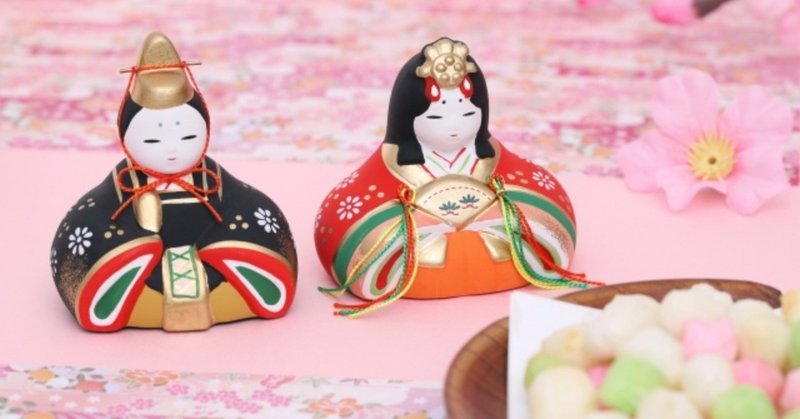
Hinamatsuri's feasts
Every 3rd March is Hinamatsuri which is the celebration day of gratitude to girl's growth in Japan.
Traditionally, families who have a young girl display Hina-doll, and eat feasts. Hina-doll represents wedding ceremony in Heian era (around 794 to 1185), and families wish that girl will get married with happiness.
Hinamatsuri has several derivations. For example, Hina-doll should put away as soon as possible after the 3rd of March over to prevent that a girl won't be able to get married or will get married late. Similarly, Hinamatsuri feasts have several derivations and meanings. I want to introduce about origins of Hinamatsuri feasts in this article.
◆What are Hinamatsuri feasts?

Traditionally, It is said that families who celebrate Hinamatsuri on the 3rd of March eat several feasts below. These feasts have its meaning of celebrating a girl's growth and of wishing her fortunes. I will explain each feature and derivations.
-Chirashi-sushi
-clam's clear soup
-Hishi-mochi (a diamond-shaped sticky rice cake)
-Hina-arare (sweet, crispy rice cracker)
-Shiro-sake (milky sake)
◆Chirashi-sushi

Chirashi-sushi is the one of sushi which rice topped with sashimi and other ingredients. 寿司(Chinese character of Sushi) means happiness and long-life. Moreover, Each ingredient has its meaning.
Shrimp means long life because its waist curved shape looks like seniors. Lotus root means good prospect future because it has several holes. Soybeans mean good health and diligent because the pronunciation recalls it. People decorate Chirashi-sushi with these and other ingredients.
◆Clam's clear soup

Because clams tightly fit with its two shells, Clams have seemed that is a symbol of a lovely couple. It wishes that a girl will have a happy life with a future husband for a long time.
◆Hishi-mochi

Hishi-mochi is a diamond-shaped sticky rice cake. It is eaten only on the 3rd of March. It has three layers of green, white and pink, and the combination of color recall the season of early spring.
Moreover, each color has its meaning. Because green represents land and plants, it means health and long life. Because white represents snow, it means purity and innocence. Because pink represents plum flower and spring, it means talisman and preventing evil.
◆Hina-arare

Hina-arare is sweet, crispy rice cracker. Some people celebrated Hinamatsuri in outside In former times. Because Hina-arare is easy to bring to out, it has become important food on that day. It has three colors of rice crackers, and it means the same wish as Hishi-mochi.
◆Shiro-sake

Traditionally, people drunk 桃花酒(Tokasyu) which is sake with a pickled plum flower. Tradition has changed to drink Shiro-sake which is milky sake after Edo era. Because Shiro-sake contains alcohol, recent people enjoy Amazake which is non-alcohol sake drink.
How many traditions of Hinamatsuri feasts have you known? I think that some ingredients may difficult to obtain outside of Japan, but if you have an interest in Japanese culture, I recommend to celebrate Hinamatsuri ceremony with feasts.
By the way, recent Japanese adult girls celebrate their Hinamatsuri with cakes and champagne!
この記事が気に入ったらサポートをしてみませんか?
